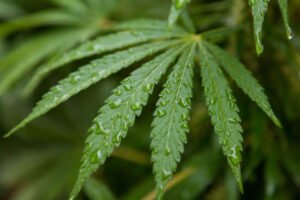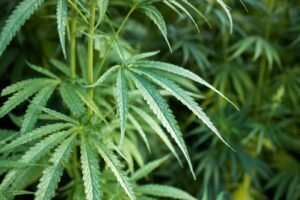Sativa vs Indica Edibles: Exploring the Science Behind the Perceived Differences
With the explosion of cannabis legalization, edibles have become a popular choice for both recreational and therapeutic users. Yet many consumers still distinguish…
Table of contents
With the explosion of cannabis legalization, edibles have become a popular choice for both recreational and therapeutic users. Yet many consumers still distinguish between sativa vs indica Exploring—believing sativa edibles deliver an energetic “head high,” while indica treats induce a relaxing “body buzz.” But how much of this perception is rooted in science? In this comprehensive guide, we’ll dive into the botanical distinctions, the role of cannabinoids and terpenes, metabolic effects, and what current research says about the true differences between sativa and indica edibles.
Understanding the Basics: Sativa vs. Indica
Before we explore edibles, let’s clarify the traditional definitions:
- Cannabis Sativa
Taller plants with narrow leaves. Historically associated with uplifting, cerebral effects—ideal for daytime use. - Cannabis Indica
Shorter, bushier plants with broad leaves. Traditionally linked to calming, body-centered effects—best for evening relaxation.
However, modern breeding has blurred these lines, creating hybrids with mixed characteristics. So when you see sativa vs indica Exploring on an edible label, what really matters?
The Role of Cannabinoids
THC vs. CBD Ratios
- THC (Tetrahydrocannabinol): The primary psychoactive compound. Higher THC often correlates with stronger “high” sensations but doesn’t inherently dictate sativa/indica effects.
- CBD (Cannabidiol): Non-psychoactive, modulates THC effects and can introduce calming properties.
Many indica-leaning edibles advertise a higher CBD:THC ratio (e.g., 1:1), while sativa options lean toward pure THC or 5:1 THC:CBD. Yet the ratio alone doesn’t capture the full picture.
Terpenes: The True Flavor and Effect Drivers
Terpenes—aromatic compounds in cannabis—play a crucial role in shaping both flavor and physiological responses. Key terpenes include:
- Limonene (citrus): Uplifting, stress relief—common in sativa varieties.
- Myrcene (earthy, musky): Sedating, muscle relaxation—often found in indicas.
- Pinene (pine): Alertness, focus—present in both but more in sativas.
- Linalool (floral): Calming, anti-anxiety—frequently in indicas.
Sativa vs indica Exploring terpenes reveals that the entourage effect—the synergy between cannabinoids and terpenes—may drive the distinct experiences users report with different edibles.
Metabolism and Onset: Why Edibles Feel Different
When you ingest an edible:
- Digestion: The gummy, brownie, or capsule travels to the stomach and small intestine.
- First-Pass Metabolism: The liver converts THC into 11-hydroxy-THC—a more potent metabolite that crosses the blood-brain barrier faster and lasts longer.
- Onset & Duration: Effects onset at 30–90 minutes but can last 6–8 hours or more, depending on dose and individual metabolism.
Individual factors like body weight, gut health, and enzyme activity (particularly CYP450 enzymes) influence how quickly and intensely you feel an edible’s effects—often more so than the sativa/indica distinction.
Scientific Studies on Sativa vs. Indica Effects
While anecdotal evidence abounds, scientific research on plant-subtype-specific effects remains sparse:
- A 2015 survey of 2,870 users found that perceived sativa strains were associated with creativity and energy, whereas indicas correlated with relaxation and sedation—but these perceptions weren’t verified by controlled trials.
- Terpene-focused research shows that limonene and pinene can modulate mood and cognition independent of THC, supporting the idea that sativa vs indica Exploring their terpene profiles offers more insight than leaf morphology.
Ultimately, more randomized, double-blind studies are needed to conclusively differentiate sativa and indica edibles.
Practical Tips for Choosing Edibles
- Focus on Cannabinoid Ratios: If you need daytime clarity, opt for higher THC with uplifting terpenes; for nighttime relaxation, choose balanced THC:CBD and sedative terpenes like myrcene.
- Check Lab Reports: Verify terpene content and cannabinoid profile on third-party certificates of analysis.
- Start Low & Go Slow: With all edibles, begin with 5–10 mg and wait at least two hours before re-dosing.
- Consider Hybrid Blends: Many edibles now blend sativa and indica terpenes to deliver balanced effects.
- Personal Tolerance Matters: Your unique metabolism and endocannabinoid tone play a huge role in your experience.
FAQs

1. Do sativa edibles really boost energy?
Not inherently. Perceived energy boosts often result from specific terpenes (like limonene) and lower CBD levels, rather than sativa genetics alone.
2. Can indica edibles make me sleepy?
Higher myrcene content and balanced THC:CBD ratios in indica-leaning edibles may promote relaxation and drowsiness, but dosage and timing are key.
3. Is the sativa/indica classification reliable?
Modern breeding and hybridization have blurred distinctions. Terpene and cannabinoid profiling is more reliable for predicting effects.
4. How long do edible effects last?
Typically 6–8 hours, sometimes up to 12 hours for high doses. Onset can take 30–90 minutes.
5. Can I mix sativa and indica edibles?
Yes—blending edibles with complementary terpene profiles can offer a customized balance of head and body effects.







